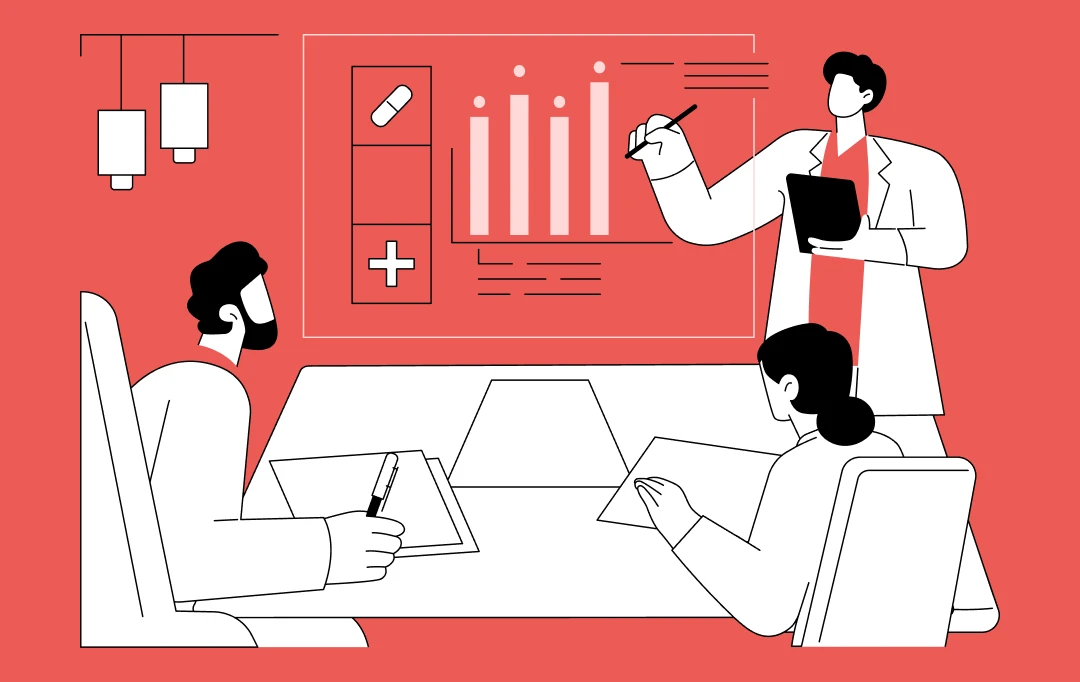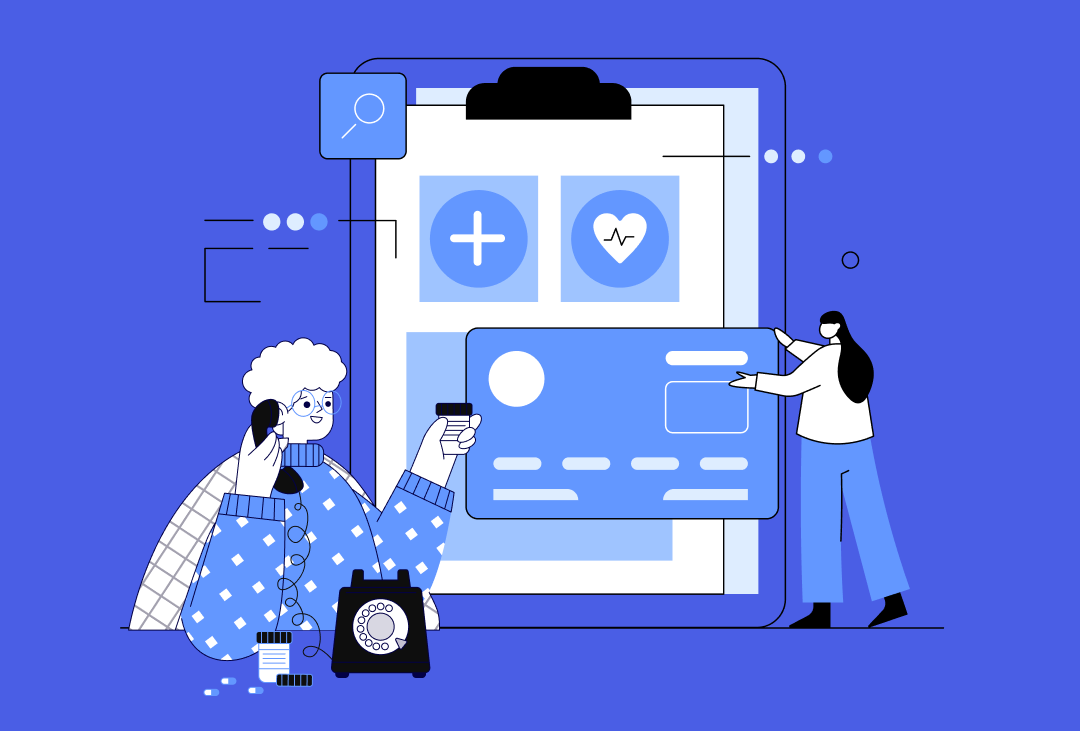- Healthcare Workforce Management Software
- How Healthcare Workforce Management Software Works?
- Benefits of Healthcare Workforce Management Software
- 1. Enhanced Workforce Productivity
- 2. Improved Employee Satisfaction
- 3. Cost Savings Through Resource Optimization
- 4. Compliance Made Easy
- 5. Elevated Patient Care Quality
- Key Features of Healthcare Workforce Management Software
- 1. Demand Forecasting and Labor Planning
- 3. Task Management
- 4. Compliance Management
- 5. Time Clock with GPS and Biometric Integration
- 6. Time-Off and Break Management
- 7. HIPAA-Compliant Communication Tools
- 8. Customizable Reports and Dashboards
- 9. Integration with Existing Healthcare Systems
- 10. Forms and Checklists
- Real-World Uses of Healthcare Workforce Management Software
- 1. Hospitals and Acute Care Settings
- 2. Long-Term Care and Nursing Homes
- 3. Clinics and Outpatient Facilities
- 4. Home Healthcare Services
- 5. Urgent Care Centers
- 6. Emergency Medical Services
- Cost of Developing Healthcare Workforce Management Software
- 1. Basic Software (Small-scale)
- 2. Mid-range Software (Mid-scale)
- 3. Enterprise Software (Large-scale)
- Factors Influencing the Healthcare Workforce Management Software Development Cost
- 1. Scope and Features
- 2. Customization and Integration
- 3. Development Team Location
- 4. Deployment Type
- 5. Testing and Maintenance
- Complexities of Healthcare Workforce Management Software
- 1. Regulatory Compliance
- 2. Integration with Legacy Systems
- 3. Data Security and Privacy
- 4. User Adoption
- 5. Customization and Scalability
- 6. Real-Time Data Processing
- 7. Cost and Time Constraints
- Appinventiv’s Role in Transforming the Healthcare Workforce Management Space
- FAQs
Healthcare systems face an unprecedented challenge: managing an increasingly dynamic workforce while meeting the rising demand for quality patient care.
Even with the U.S. Bureau of Labor Statistics projecting a 13% increase in the healthcare workforce by 2031, a rate faster than any other sector, staffing shortages, unpredictable schedules, and compliance complexities leave many organizations struggling to optimize their workforce.
This is where healthcare workforce management software steps in. By leveraging automation, data analytics in healthcare, and predictive tools, these solutions transform how healthcare facilities manage their teams, boosting productivity while ensuring patient care remains uncompromised.
Healthcare workforce optimization is no longer just about scheduling; it encompasses predictive analytics, compliance management, and resource allocation, streamlining workforce management in healthcare.

This article will explore how healthcare workforce management software streamlines operations and empowers healthcare professionals to focus on what they do best: saving lives.
Healthcare Workforce Management Software
Healthcare workforce management software is a comprehensive solution to streamline healthcare staff’s planning, scheduling, and management. It addresses critical workforce challenges, such as staff shortages, fluctuating patient demands, and compliance with labor regulations.
By automating critical processes, it integrates with existing systems like electronic health records, payroll software, and hospital workforce management tools, ensuring a unified approach to healthcare workforce management.
At its core, this software leverages advanced technologies like AI, machine learning, and real-time data analytics to automate complex processes. It integrates seamlessly with existing systems, ensuring effective healthcare administration software that aligns with healthcare operations.
The WFM software market is exploding—from $1.9B in 2023 to a projected $5.12B by 2031! Don’t get left in the dust—gear up your workforce management software and stay ahead of the curve.
How Healthcare Workforce Management Software Works?
Healthcare Workforce Management Software offers a centralized platform for managing and optimizing staff schedules, workload distribution, compliance tracking, and performance monitoring. Through the real-time data, automation, and sophisticated analytics, this software allows healthcare organizations not only to streamline administrative tasks but also to tackle issues regarding staff, cut costs, and maximize productivity.
Also Read: How do you build employee monitoring software?
Let’s explore how this new technology works and the value that is brought to healthcare organizations.

1. Demand Forecasting
The software predicts staffing needs by analyzing patient volume trends and historical data, helping administrators allocate resources efficiently.
2. Automated Scheduling
It creates optimal schedules by balancing staff availability, skill sets, and regulatory requirements, minimizing manual intervention, and improving healthcare staff scheduling.
3. Real-Time Adjustments
As patient demands fluctuate, the system updates real-time schedule, ensuring appropriate staffing levels without overburdening employees and facilitating smoother healthcare workforce planning.
4. Performance Tracking
The software monitors workforce productivity and generates actionable insights, enabling data-driven decision-making to improve medical workforce management.
5. Compliance Management
Built-in compliance tools ensure adherence to labor laws, certifications, and shift regulations, reducing risks for healthcare providers. This streamlines compliance management for hospitals and other healthcare institutions.
Also Read: Compliance Management Software Development Costs
A strategic healthcare workforce management software development process can ensure smoother operations, happier employees, and better patient outcomes by automating these critical functions.
Now that we’ve explored what healthcare workforce management software is and how it works, let’s delve into why it’s a game-changer for healthcare organizations.
Beyond its operational functionalities, the software addresses critical pain points like staffing inefficiencies, employee burnout, and patient care quality. The result? A system that not only streamlines day-to-day management but also drives meaningful outcomes for staff and patients. This, ultimately, sets the defining role of workforce management software for healthcare.
Benefits of Healthcare Workforce Management Software
Clinical workforce management system offers more than just operational efficiency; it transforms how healthcare organizations function. By automating critical processes and optimizing staff allocation, this software addresses common challenges like staffing shortages, compliance issues, and employee burnout. Moreover, its holistic approach ensures that organizational goals and employee well-being are prioritized, ultimately enhancing patient care and driving cost-effective outcomes.
1. Enhanced Workforce Productivity
Healthcare talent management solutions automate time-intensive tasks like scheduling and shift adjustments, freeing administrators to focus on strategic priorities, and with the help of predictive analytics, staffing needs are met proactively, ensuring teams operate at peak efficiency. For instance, during a patient surge, the system dynamically reallocates resources, preventing delays in care and improving healthcare workforce planning.
2. Improved Employee Satisfaction
A well-managed workforce is a happier one. Self-service tools, such as mobile apps for shift swaps or vacation requests, give employees greater control over their schedules. Additionally, balanced workloads help reduce burnout, creating a more motivated and engaged workforce.
3. Cost Savings Through Resource Optimization
By analyzing staffing patterns and avoiding overstaffing or excessive overtime, the software cuts unnecessary costs while also reducing the dependence on costly temporary staffing solutions by ensuring core teams are efficiently utilized. The after-effect of WFM healthcare implementation also lies in the fact that hospitals can avoid wasteful spending while improving staffing levels across departments.
4. Compliance Made Easy
Managing compliance is a constant challenge for healthcare organizations. Healthcare workforce management software simplifies this by tracking certifications, licenses, and regulatory requirements in real-time. These systems also come with automated alerts and built-in safeguards to prevent violations and protect the organization from penalties.
5. Elevated Patient Care Quality
When staff are well-rested, fairly scheduled, and not bogged down by administrative burdens, they can focus on their primary goal – providing exceptional patient care. This leads to better patient outcomes, higher satisfaction scores, and a stronger reputation for the healthcare facility. Ultimately, by ensuring the right staff is available at the right time, medical workforce management software can reduce wait times and improve service and patient satisfaction.
After exploring the numerous benefits healthcare operations software offers, it’s clear that these solutions do more than simply streamline operations – they create a more efficient, compliant, and supportive environment for staff and patients.
To realize these benefits in practice, the software incorporates various features that enable healthcare organizations to optimize staffing, enhance communication, and reduce operational risks. To get a deep-level understanding of how you can build a product that meets all these expected benefits, let us have a drilled-down view of the healthcare workforce management software features.
Key Features of Healthcare Workforce Management Software
Healthcare talent management solutions come packed with advanced functionalities designed to tackle complex workforce challenges in healthcare settings. Here’s a closer look at the features that make these solutions indispensable:

1. Demand Forecasting and Labor Planning
Healthcare staff scheduling uses predictive analytics to analyze historical data, patient trends, and seasonal variations, enabling healthcare facilities to anticipate staffing needs. This ensures an optimal balance between overstaffing and understaffing, reducing costs while maintaining patient care standards.
2. Automated Scheduling
Gone are the days of manual schedule adjustments. A workforce management healthcare software can generate conflict-free schedules by considering employee availability, skill sets, and shift regulations. It also allows real-time changes during emergencies, ensuring smooth operations.
3. Task Management
This feature centralizes task assignments, enabling supervisors to allocate duties efficiently. Employees can view and update task statuses, providing clarity and ensuring critical responsibilities are never overlooked.
4. Compliance Management
Healthcare facilities must adhere to numerous labor laws, shift regulations, and certification requirements. Software that deals with workforce management for healthcare simplifies this process by tracking compliance metrics, alerting administrators to potential issues, and ensuring facilities remain audit-ready at all times.
5. Time Clock with GPS and Biometric Integration
With GPS-enabled or biometric time clocks, healthcare organizations can track staff attendance and location accurately. This prevents time theft and ensures accountability for mobile or off-site staff.
6. Time-Off and Break Management
Managing leave requests and break schedules can be complex, especially during peak times. The hospital staff management software automates these processes, helping to distribute time-off fairly while ensuring that patient care is never disrupted.
7. HIPAA-Compliant Communication Tools
Staff can communicate securely through built-in messaging platforms that adhere to HIPAA standards. This ensures patient data remains protected while fostering real-time collaboration among team members.
8. Customizable Reports and Dashboards
Administrators can create tailored reports to track workforce metrics such as attendance, overtime, and performance. Interactive dashboards provide real-time insights, helping leaders make informed decisions quickly.
9. Integration with Existing Healthcare Systems
The healthcare staff scheduling software should integrate seamlessly with electronic health records, payroll, and billing platforms. This unified approach would eliminate data silos and reduce administrative workload.
10. Forms and Checklists
Digitized forms and checklists simplify routine documentation tasks such as patient intake forms or compliance audits. This not only saves time but also ensures consistency and accuracy in reporting.
By leveraging these robust features, workforce management healthcare software becomes a critical asset for optimizing workforce efficiency, improving staff satisfaction, and delivering superior patient care.
Having explored the key features of healthcare workforce management software, it’s clear how these functionalities can transform day-to-day operations across various healthcare settings. However, to truly understand this software’s value, it’s important to look at how it’s applied in real-world scenarios.
The following use cases demonstrate how healthcare organizations leverage these powerful features to address specific challenges, optimize workforce efficiency, and deliver better patient care.
Let’s build custom Workforce Management Software that fits your needs and boosts patient care. We’ve got you covered!
Real-World Uses of Healthcare Workforce Management Software
Healthcare administration software is versatile, with applications varying across various healthcare settings. From hospitals to long-term care facilities, the software addresses diverse, deep-rooted challenges while improving operational efficiency and patient care. Let’s explore some real-world use cases where it significantly impacts.

1. Hospitals and Acute Care Settings
In busy hospital environments, where staffing needs can change rapidly, a staff management healthcare app helps to ensure that shifts are filled based on patient load and the specific skills required.
For instance, during a surge in emergency cases, the system can dynamically reallocate staff to critical care units, optimizing staffing in real-time. Moreover, automated scheduling and demand forecasting can help prevent understaffing during high-demand periods, while compliance tools ensure adherence to labor regulations.
2. Long-Term Care and Nursing Homes
In long-term care settings, such as nursing homes, the healthcare workforce optimization software streamlines the management of regular shifts for caregivers, aides, and nurses. The system can also account for varying levels of care needed for different patients and ensure the right staff is always on hand to deliver that care. The result? With time-off and break management features, staff burnout is minimized, ensuring residents receive consistent care.
3. Clinics and Outpatient Facilities
For clinics and outpatient facilities, where the patient flow may be less predictable, healthcare workforce planning software offers the flexibility to adjust staffing based on patient appointments and urgent care needs. Through features like time tracking with GPS, it can be ensured that the mobile staff, such as home healthcare providers or visiting nurses, are managed efficiently, and automated scheduling is allowed for smoother day-to-day operations.
4. Home Healthcare Services
Managing the workforce for home healthcare services can be complex, with nurses, caregivers, and therapists working in multiple locations. A well-planned healthcare workforce management software development effort can allow agencies to schedule visits, track employee hours, and monitor compliance with healthcare regulations. The software provides real-time data for agencies to adjust staffing levels based on patient needs, ensuring consistent, high-quality care.
5. Urgent Care Centers
Urgent care centers often face fluctuating patient volumes, particularly in peak hours. Healthcare staff scheduling software helps these centers optimize staff allocation, ensuring enough medical professionals can handle walk-in patients. With task management features, staff can easily track patient flow and prioritize critical care. The software also allows quick adjustments to staff schedules as demand increases or decreases.
6. Emergency Medical Services
EMS teams are often on the move, and scheduling and staff management can become complicated. Here, the workforce management healthcare platform comes in handy to enable real-time tracking of paramedics, drivers, and other staff, ensuring that the right teams are dispatched to emergencies. Additionally, the software provides scheduling tools that help prevent burnout among EMS staff by managing shift rotations and time-off requests efficiently.
These use cases highlight how healthcare workforce management software adapts to the unique challenges of different healthcare environments, ensuring better resource utilization, increased staff satisfaction, and improved patient care.
After exploring the various use cases of healthcare workforce management software and understanding how it can benefit healthcare organizations, evaluating the financial aspect of implementing such a solution is essential.
While, depending on the scale and complexity of the system, the costs can vary, having a clear understanding of the cost structure can help organizations make informed decisions about the investment required for healthcare workforce management software development. Let’s dive into the factors that influence the development cost and the price ranges for different solutions.
Cost of Developing Healthcare Workforce Management Software
When considering the healthcare workforce management software development cost, the range can vary based on several factors, such as the complexity of features, the development approach, and the scale of the deployment.

1. Basic Software (Small-scale)
For a basic version with essential features such as scheduling, time tracking, and basic reporting, the development cost can range from $20,000 to $50,000. This would be suitable for smaller healthcare facilities or clinics with fewer customization needs.
2. Mid-range Software (Mid-scale)
A more advanced solution with features like compliance management, task tracking, and integration with EHR systems could cost between $50,000 and $150,000. This range is typical for medium-sized healthcare organizations such as outpatient clinics or nursing homes.
3. Enterprise Software (Large-scale)
For large healthcare organizations or hospitals requiring a fully customized solution with predictive analytics, AI integration, and complex system integrations, the development cost can range from $150,000 to $500,000 or more. This price range also includes robust security features, advanced reporting capabilities, and continuous support and maintenance.
These price ranges offer a rough estimate for the development of healthcare workforce management software, but the actual cost may vary depending on the unique needs of the organization and the development team’s expertise. Despite the initial investment, the long-term benefits of a tailored software solution often result in significant cost savings and operational efficiencies.
Factors Influencing the Healthcare Workforce Management Software Development Cost
Below are some key factors that influence the development cost and an estimate of the price range.

1. Scope and Features
The more features the software includes – such as demand forecasting, automated scheduling, compliance management, and integration with existing systems – the higher the development cost. The complexity of each feature, especially for advanced functionalities like predictive analytics or AI-powered scheduling, can also increase costs.
2. Customization and Integration
Customizing the software to meet the specific needs of a healthcare facility and integrating it with other systems like EHR, payroll, or billing platforms adds to the development cost. Tailoring the software to comply with local regulations and specific organizational requirements may require additional development time and resources.
3. Development Team Location
The cost of development can vary significantly depending on the location of the development team. Developers based in North America or Western Europe tend to charge higher hourly rates than teams in regions like Eastern Europe or Asia.
4. Deployment Type
Cloud-based solutions tend to be less expensive to develop compared to on-premises software, which requires more extensive infrastructure, security, and maintenance considerations.
5. Testing and Maintenance
Ongoing testing, bug fixes, and software updates are crucial parts of the development process. If the software requires continuous updates and a robust support system, these factors will contribute to the overall cost.
After understanding the cost factors associated with developing healthcare workforce management software, it’s important to recognize the complexities of building or integrating such a solution. While the initial investment may seem straightforward, these complexities require additional resources, expertise, and ongoing maintenance, which can drive up the total cost.
Therefore, it’s essential for healthcare organizations to carefully consider these factors when planning their workforce management software development to ensure both the success of the implementation and a clear understanding of the full financial commitment.
Complexities of Healthcare Workforce Management Software
Developing or integrating healthcare workforce management software presents several challenges due to the complexity of healthcare environments and the need to adhere to strict regulations. These complexities can impact the development timeline, cost, and the project’s overall success. Below are some of the primary complexities of healthcare workforce management that organizations may face when building or integrating the software:

1. Regulatory Compliance
Healthcare is one of the most regulated industries globally. Ensuring that the software complies with standards such as HIPAA in the U.S., GDPR in Europe, or other local data protection laws is crucial. Non-compliance can lead to severe penalties, so this requires ongoing attention during the development process.
2. Integration with Legacy Systems
Healthcare organizations often operate with old and new technologies. So, while ensuring seamless data exchange between these systems is vital for avoiding disruptions to daily operations, integrating new workforce management software with existing systems like Electronic Health Records, payroll systems, and scheduling platforms can be challenging.
3. Data Security and Privacy
Protecting sensitive patient and employee data is paramount. Developing software that secures personal health information and workforce details, especially with cloud-based solutions, demands robust security protocols. It is critical to consider encryption, secure data storage, and regular security audits as the fundamental points to maintaining data privacy.
4. User Adoption
Introducing new software often requires a shift in workflows and habits. Training staff and ensuring the smooth adoption of the new system can be time-consuming and challenging, particularly for healthcare facilities with diverse teams and varying levels of tech-savviness.
5. Customization and Scalability
Healthcare organizations vary widely in size, structure, and operational needs. Another challenge is developing software that can be customized to suit specific needs while also being scalable as the organization grows. This requires careful planning and resource allocation during the development phase.
6. Real-Time Data Processing
Many healthcare operations require real-time data processing to adjust workforce schedules based on patient needs or staff availability. One of the main limitations of healthcare workforce management software lies in building software that can handle high volumes of real-time data and adjust quickly without lag – something that requires a strong infrastructure and robust algorithms.
7. Cost and Time Constraints
Given the complexity of integrating all necessary features, staying within budget and meeting deadlines can be difficult. Balancing the need for advanced functionalities with budgetary constraints can often be a major challenge in healthcare software development services.
Despite these challenges, the long-term benefits of effective workforce management software can be significant.
However, navigating the complexities of developing or integrating healthcare workforce management software requires more than technical expertise. The challenges we’ve discussed – right from regulatory compliance and data security to integration with legacy systems – demand a partner who not only understands these intricacies but can address them effectively. At Appinventiv, we are well-equipped to tackle these challenges and seamlessly guide you through the development process.
Our deep understanding of Healthcare software development services and a proven track record in delivering custom software solutions means that we can help you overcome these obstacles, ensuring that your workforce management system is efficient and compliant. Let us show you how we can transform these challenges into growth and operational excellence opportunities.
Grab your personalized quote and chat with our app dev pros for a spot-on cost estimate tailored just for you!
Appinventiv’s Role in Transforming the Healthcare Workforce Management Space
At Appinventiv, we understand that developing or integrating healthcare workforce management software can be complex and daunting. These challenges can feel overwhelming, from ensuring regulatory compliance and data security to navigating legacy system integrations and managing real-time data processing. But that’s where we come in.
With our extensive expertise in healthcare software development services, we partner with you to address these complexities head-on. We work closely with healthcare organizations to create custom solutions that streamline workforce management, reduce administrative burden, and ensure seamless integration with your existing systems. Whether you’re looking to build a new solution or improve an existing one, we bring the technical expertise to handle the most intricate workflows and compliance requirements.
We understand that every healthcare organization has unique needs, so we tailor our approach to meet those specific demands. Our team ensures that your workforce management software is compliant with regulations like HIPAA and designed to handle sensitive data with the utmost security. We focus on scalability, ensuring that your software can adapt and evolve as your organization grows to meet future demands.
With Appinventiv, you’re not just getting a development partner – you’re getting a team that will guide you through every step of the process, from overcoming challenges to delivering a solution that maximizes efficiency, enhances operational performance, and ultimately improves the care experience. Let us help you navigate these complexities and build a workforce management solution that empowers your healthcare organization to thrive.
FAQs
Q. What is Workforce Management in Healthcare?
A. Workforce management in healthcare refers to effectively managing healthcare staff to ensure that the right number of skilled professionals are available at the right time to meet patient needs. This includes scheduling shifts, tracking time and attendance, managing overtime, and ensuring compliance with healthcare regulations.
Q. Why Must Hospitals Invest in Workforce Management Software?
A. Hospitals must invest in workforce management software to streamline operations, reduce labor costs, and ensure compliance with healthcare regulations. With the increasing demand for quality care and the complexity of managing diverse healthcare teams, manual processes can lead to inefficiencies, errors, and staff burnout. In response, workforce management software automates scheduling, tracks employee performance, and ensures optimal staffing levels, allowing hospitals to focus on improving patient outcomes and operational performance.
Q. Why Is Workforce Management Software Important in Healthcare Services?
A. Workforce management software is crucial in healthcare services because it ensures that healthcare organizations can efficiently manage their most valuable asset – staff. It helps hospitals and clinics optimize staffing levels, reduce operational costs, improve employee satisfaction, and ensure compliance with legal and regulatory standards.
As a result, by automating routine tasks like scheduling, time tracking, and overtime management, healthcare providers can focus more on patient care and less on administrative burdens, leading to enhanced patient outcomes and overall organizational efficiency.
Q. What Are The Benefits of Intelligently Automated Healthcare Services Scheduling?
A. Intelligently automated healthcare services scheduling offers several key benefits:
1. Improved Efficiency: Automated scheduling eliminates manual errors, reduces scheduling conflicts, and ensures that shifts are filled quickly and accurately.
2. Cost Savings: It helps reduce overtime costs by optimizing staff schedules and ensuring the right number of workers are on duty at all times.
3. Enhanced Patient Care: Proper scheduling ensures that qualified professionals are available to meet patient needs, leading to better care delivery.
4. Better Staff Satisfaction: Employees have more predictable schedules, reducing burnout and improving job satisfaction.
5. Regulatory Compliance: Automated systems help ensure compliance with labor laws and healthcare regulations by tracking working hours and managing rest periods.
Q. How to Build Healthcare Workforce Management Software?
A. Building healthcare workforce management software requires careful planning and execution. Here are the key steps:
1. Identify the Requirements: Understand the specific needs of the healthcare organization, such as scheduling, compliance, time tracking, and integration with existing systems (e.g., EHR or payroll systems).
2. Choose the Right Technology: Select a technology stack that supports scalability, data security, and integration with other healthcare systems.
3. Design the Software: Develop a user-friendly interface for both administrators and healthcare staff. The design should streamline workflows and simplify tasks like scheduling, attendance tracking, and performance monitoring.
4. Ensure Compliance: Make sure the software adheres to healthcare regulations such as HIPAA, data privacy laws, and labor laws to protect patient and employee data.
5. Integrate Systems: Integrate the software with other healthcare systems, such as EHRs, payroll, and HR systems, to ensure seamless data flow across platforms.
6. Test and Optimize: Conduct thorough testing to identify and fix bugs. Gather feedback from users to continuously improve the software.
7. Provide Training and Support: Ensure staff are trained on using the system, and provide ongoing technical support to address any issues.
By following these steps, healthcare organizations can create a tailored workforce management solution that improves operational efficiency, enhances staff satisfaction, and ensures quality patient care.



Why Telehealth Security is Non-Negotiable for Patient Trust and How to Achieve It
Key takeaways: Telehealth security is crucial for patient trust and the continued adoption of digital healthcare services. The rising tide of cyber threats, from ransomware to inadequate authentication, poses significant risks to patient data and provider reputation. Implementing robust security measures like end-to-end encryption, multi-factor authentication, and regular audits is non-negotiable. Compliance with regulations like…

10 Ways Healthcare Providers Are Using Patient Analytics to Enhance Care Plans and Optimize Outcomes
Imagine a world where doctors don’t just react to health crises, but predict and prevent them before they happen. This is the reality with patient analytics for healthcare providers. The healthcare industry is no longer limited to treating symptoms—it’s now about understanding patterns, making smarter decisions, and delivering care that’s truly personalized. And it’s not…

Exploring the Role of Personalization in Healthcare through Technology
Key takeaways: Personalization in healthcare transforms patient care from generic, population-based treatments to individualized approaches tailored to each patient's unique needs. Advanced technologies like AI, IoMT, and genomics are the core enablers for tailoring medical treatments. Personalization drives significant benefits, including improved patient outcomes, higher engagement, and reduced costs. The future of healthcare is hyper-individualized,…



















